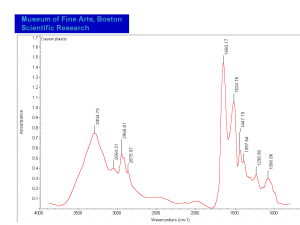Casein plastic
Description
A plastic prepared from Casein, a natural Phosphorus-containing protein found in Milk. While trying to make a waterproof coating in 1897, Adolph Spitteler and associate W. Krische of Germany discovered that casein becomes hard and insoluble when treated with Formaldehyde. This process, however, is slow and can take up to a year for a 2.5 cm thick sheet to be produced. The resultant plastic was cut, then molded into limited shapes by hot stamping. Casein plastics were used for small items such as buttons, beads, buckles, combs, necklaces, fountain pens, umbrella handles, cutlery handles, and knitting needles. Casein plastics were often pigmented to simulate Ivory, Horn, Jade, Pearl, and Tortoiseshell. In the 1930s, an Italian chemist, Antonio Ferretti developed a successful method to make casein plastic into fibers (see Azlon fiber, Lanital).
Synonyms and Related Terms
casein formaldehyde; milkstone; artificial horn; plástico con base de caseína (Esp.); plastique à base de caséine (Fr.); Galalith (Deut.); Galalite (It.); Erinoid (Br.); Syrolit (Ire.);
Commercial products: Galalith (France 1900, then Germany 1904); Syrolit (England 1909-1913); Erinoid (England 1914-1980); Aladdinite (U.S. in 1919); Lactoid (England 1922-1962); Karolith (US 1924-1931); Dorcasine (England 1930); Ameroid (1931 US); Kyloid; Casolith; Galorn; Lanital (fiber)
Risks
- Contact with water, acids or alkalis may cause crazing.
- Susceptible to biological attack.
- Burns slowly and brightly in air, but extinguishes with removal of flame source.
Physical and Chemical Properties
Insoluble in water, acid
Burns with odor of burnt hair.
Comparisons
General Characteristics of Polymers
Physical Properties for Selected Thermoset Resins
Resources and Citations
- Care and Identification of Objects Made from Plastic, Conserve O Gram 8/4, National Park Service, September 2010.
- Plastics Historical Society at http://plastiquarian.com/?page_id=14228
- Pam Hatchfield, Pollutants in the Museum Environment, Archetype Press, London, 2002
- M.Kaufman, The First Century of Plastics, The Plastics and Rubber Institute, London, 1963 Comment: gives 1897 as discovery, 1899 as German patent and 1900 as U.S. patent
- Website: www.me.umist.ac.uk.historyp - first made in 1897..by Krische and Spitteler
- History of Plastics: www.nswpmith.com.au/historyofplastics.html - discovered in 1897
- The Dictionary of Art, Grove's Dictionaries Inc., New York, 1996 Comment: "Plastics"
- F. Kidd, Brushmaking Materials, British Brush Manufacturers, London, 1957
- Art and Architecture Thesaurus Online, http://www.getty.edu/research/tools/vocabulary/aat/, J. Paul Getty Trust, Los Angeles, 2000
